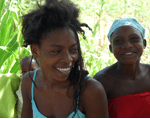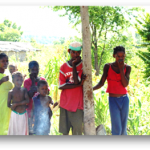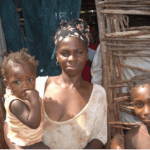As part of an ongoing series of updates about systemic change projects in the VIncentian Family, former Superior General Robert Maloney describes a Hatian Initiative “Pathway to a Better Life”
CHEMEN LAVI MIYÒ (CLM) is a very successful, exciting program that works toward systemic change among the poorest of the poor in Haiti, families whose members are sometimes called the “bottom billion” in society, living on less than $1.25 a day.
Chemen Lavi Miyò means “Pathway to a Better Life”.
It is a program sponsored by Fonkoze in Haiti for extremely poor families which would fail if they entered a conventional microfinance program. CLM replicates an extreme poverty alleviation program developed over fifteen years by BRAC in Bangladesh. BRAC is assisting Fonkoze, even placing BRAC field staff in Haiti to ensure success.
After 18 months of close accompaniment by a case manager, families will have a sustainable enterprise, several sources of income and a small savings account. Their children will all be in school, they will have decent shelter and they will be food secure. If they choose to do so, they will be prepared to accept standard microcredit, with no further need of subsidies.
WHO CAN PARTICIPATE?
 CLM Member families generally:
CLM Member families generally:
- Are headed by women with multiple children;
- None of the children are in school;
- Have no income-generating assets, such as farmable land or livestock;
- Have no reliable access to food, often going days without a meal; and
- Either have no access to healthcare or don’t know how to take advantage of available healthcare.
HOW ARE MEMBERS SELECTED?
 Members are selected through a rigorous four-step process:
Members are selected through a rigorous four-step process:
- A community meeting is held where residents discuss the impact of poverty on their community, define 5 categories of poverty, and map out all the house- holds in the community.
- A smaller group, carefully chosen from the first meeting’s participants, holds a second, confidential meeting where they come to a consensus as to each family’s “wealth ranking.”
- Trained Fonkoze staff visit all households that are ranked in the poorest two categories. They complete three separate evaluations of the household’s economic status: Fonkoze’s poverty scorecard, the internationally-recognized Progress out of Poverty Index, and a Food Security Index.
- Fonkoze supervisors make a second home visit, interviewing prospective CLM members to confirm the results of the first visit.
WHAT DO MEMBERS RECEIVE?
Each member receives:
- Confidence building, enterprise management, and life skills training;
- The assets necessary to establish two enterprises: e.g., 3 goats, 8 chickens, merchandise to sell, a donkey to rent;
- A small, 6-month cash stipend that enables them to stop begging and care for their new assets;
- Assistance in getting the children in school;
- At least one visit per week from a Fonkoze case manager to reinforce training and track progress;
- Construction/repair of home, including sanitary latrine, with member participation;
- A filter to ensure water safety; and
- Free health care with training how to use it.
HOW MUCH DOES THE PROGRAM COST?
The cost for CLM per member family is $1,500 over the 18-month period of services.
WHAT ARE THE RESULTS?
In a carefully controlled pilot with 150 families, 97% graduated, and 75% elected to go on in a microcredit program. Today, Fonkoze is serving 1,350 families in the program.
In 2011, the worldwide Vincentian Family, through the Zafèn website and other off-line donations, raised more than a half million dollars for this project, thus enabling hundreds of additional people to enter into it and successfully complete it.
For a 6-minute video about Chemen Lavi Miyò and further information on it, cf. the following link:
http://www.youtube.com/watch?v=wvOQOGP1pT0
Robert P. Maloney, C.M.
Tags: CLM, Fonkose, Haiti, Robert P. Maloney, Systemic change, Zafen


